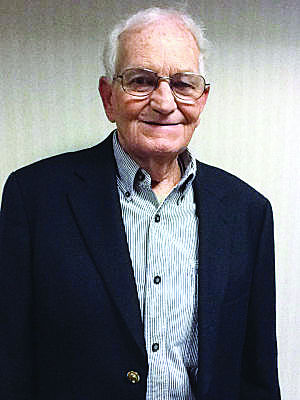For many individuals the concept of Living independently is taken for granted. But, for a great number of individuals with significant disabilities the concept is ever challenging…Do I have access to parking? Can I receive housing assistance? How can the Veterans Administration help me with my disability? Can I find help with employment assistance?
The questions are too numerous to write about in this article, for certain; as numerous as the many different disabilities that our citizenry have.
I was recently appointed by Governor Abbott to serve on the Board of Directors of the Texas State Independent Living Council, and just got back from Austin after my first quarterly meeting of the Council. It is indeed an honor and privilege to serve the people of our state, and my first meeting was really intense…hundreds of acronyms to learn, associations with other councils and organizations, rules and regulations, etc…really a lot to digest.
Since passage of national legislation concerning persons with disabilities in the early 1970’s, there has been considerable changes in our concepts and practices regarding them. I remember when I began working with persons with mental illness diagnosis, persons with substance abuse disorders, and persons with developmental and intellectual disabilities; there was not a lot going on in the implementation of services and accessibility for those individuals.
I was asked to be a part of city development plan for accessibility for persons with disabilities in one city I worked in. We began installing ramps for wheelchairs, taking out curbs at city intersections, installing handicapped parking signs (with the cooperation of many businesses), etc. I must admit that the city did an excellent job in their accessibility efforts.
Getting the general public to be aware was yet another matter…progress was slow. For example, I remember watching an elderly person with a physical disability having to walk across a parking lot to enter a store because the accessible parking was taken up by individuals without a handicapped placard or license plate (this type of behavior is still with us to this day, unfortunately, despite the displayed fines that may be imposed).
There are literally hundreds of disabilities that our citizenry encounter…individuals with congenital disabilities, the person with Down syndrome, the person with paraplegia, a person unable to speak, the individual who is visually impaired, the person with a mental health condition, and individual with an intellectual and developmental disability, a student who receives special education services; and a host of others.
The usage of “first person language” is so important; emphasizing the person first rather than the disability.
The Rehabilitation Act of 1973 (and as amended) was the precursor of the State Independent Living Councils and the State regional Centers for Independent Living. The Centers for Independent Living, of which there are 28 within our State, provides information and referral services; independent living skills training, individual and systems advocacy, peer counseling, and transitional services for persons with disabilities.
The Centers for Independent Living are not places for persons with disabilities to live, are run by people with disabilities to assist people with disabilities to live their lives as independently as possible, provide direct independent living services to individuals with disabilities, and are actively involved with assisting individuals moving out if institutional settings and back into community-based, consumer-directed programs.
The Center of our region is the Valley Association for Independent Living (VAIL), located in McAllen, and covers the citizenry of Cameron, Hidalgo, Starr, and Willacy counties.
The State Independent Living Council serves the purpose of developing the Texas State Independent Living Plan; with the prime emphasis being how the network is going to improve independent living services for individuals with disabilities. The mission of the State Independent Living Council is to ensure that all Texans with disabilities have access to quality Independent Living services by providing a framework for service delivery.
The State Council envisions a Texas where people with disabilities make informed choices and direct their own lives, have the opportunity to assess and incur risks, are viewed as individuals and not stereotypes; and live, work, and play in the least restrictive environment possible. Other roles that that the State Independent Living Council have are systems advocacy, education of the public regarding disability-related topics, and establishing a provision of technical assistance concerning the Independent Living philosophy and approach.
The Texas State Independent Living Council is a non-profit entity that is mainly funded through the Administration on Community Living and the Texas Department of Assistive and Rehabilitation Services. The Council members are all volunteers appointed by the Governor, and of which the majority must be persons with disabilities; 10 voting members and no less than four ex-officio members, and who come from all regions of the state.
The Council meets quarterly at differing cities and regions throughout the state, and comes together with other entities at a State Conference once per year.
Want to learn more? I encourage you to go to the Valley Association for Independent Living (VAIL) web site at Vailrgv.org or the Texas State Independent Living Council (SILC) website (which also has a Facebook page). Until next time, Stay Healthy my Friends!





